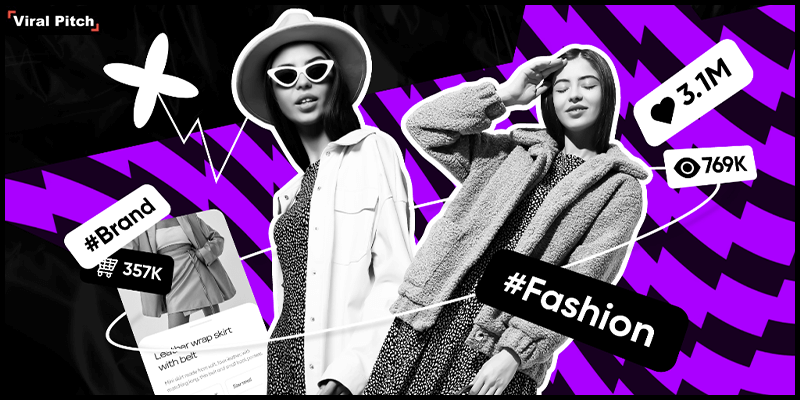How Influencer Marketing is Redefining the Fashion Industry in 2025

The global fashion industry has always evolved alongside culture, technology, and consumer behavior. But in 2025, one force stands out as the most transformative of all influencer marketing. What began as a trend a decade ago has now become a fully integrated ecosystem shaping purchasing decisions, brand identity, and even the creative direction of major fashion houses. From digital-first labels to luxury giants, brands are now reimagining their strategies around influencers and the communities they cultivate.
The Rise of Community-Driven Fashion
Fashion in 2025 is no longer solely dictated by runways or editorial magazines. Consumers now look to real people, relatable voices, and community-based trends. Influencers provide exactly that - authenticity and accessibility. Platforms like Instagram, TikTok, and emerging social shopping apps allow fashion enthusiasts to follow style creators in real time, making fashion feel more personal and inclusive.
This shift has encouraged brands to invest heavily in influencer-led campaigns, considering them more impactful than traditional advertising. With influencers able to showcase daily outfits, behind-the-scenes content, and honest reviews, audiences connect with fashion more organically than ever before.
How Technology Is Powering Influencer-Driven Fashion
The technological evolution of influencer marketing has played a major role in its expanding dominance. Brands now rely on advanced Influencer Marketing Platforms to discover creators, analyze engagement data, and measure campaign success. These tools use AI-based analytics to track audience authenticity, demographic alignment, content quality, and trend projection ensuring that partnerships are not based solely on follower numbers but on genuine influence.
For fashion brands, these platforms simplify the process of finding creators who match their aesthetic, values, and target market. Whether a brand is searching for niche micro-influencers or global icons, technology ensures collaborations are strategic, data-backed, and scalable.
The Power of Instagram Fashion Influencers in 2025
Instagram continues to be the heart of digital fashion. Its visual-first format, interactive features, and thriving creator economy make it the most influential platform for style discovery. Brands frequently use data tools to find the top Instagram fashion influencers who resonate with specific audiences—whether that’s sustainable fashion advocates, luxury content creators, streetwear trendsetters, or emerging style bloggers.
The role of these influencers has expanded beyond simple product promotion. In 2025, they act as:
-
Creative directors, shaping capsule collections
-
Trend forecasters, identifying micro-trends before they peak
-
Brand storytellers, crafting narratives that feel personal and human
This deeper level of involvement elevates influencer partnerships into long-term collaborations rather than one-off campaigns.
Micro-Influencers: The New Fashion Powerhouses
While mega-influencers and celebrities still command attention, the real shift in 2025 lies in the rise of micro-influencers. These creators—typically with 10,000 to 100,000 followers—offer smaller but more engaged communities. Their audiences trust them because they feel like peers, not distant personalities.
Fashion brands increasingly turn to micro-influencers for:
-
Higher engagement rates
-
Authentic storytelling
-
Local market reach
-
Cost-effective campaign strategies
This approach not only increases ROI but also helps brands build deeper emotional connections with consumers.
The Era of Social Commerce and Instant Buying
Another major reason influencer marketing is reshaping fashion is the rise of social commerce. Users can now purchase outfits directly from influencer posts through in-app checkout features. This seamless transition from inspiration to purchase reduces friction and accelerates buying decisions.
Whether a creator is showcasing a high-street look, luxury handbag, or sustainable clothing line, consumers can purchase instantly—turning influence into direct revenue.
Sustainable Fashion Gains Momentum Through Influencers
Sustainability continues to be a defining movement in fashion, and influencers play a crucial role in promoting conscious consumerism. Eco-fashion creators focus on educating followers about ethical brands, slow fashion, garment longevity, and recycling practices.
Their influence encourages both consumers and brands to adopt environmentally responsible choices. In 2025, many sustainable fashion labels rely heavily on influencers to amplify their mission and reach likeminded communities.
Luxury Fashion Embraces Influencer Partnerships
Even the luxury fashion world once heavily dependent on elite editorial gatekeepers has embraced influencer marketing. High-end brands now collaborate with carefully selected creators for:
-
Exclusive collection reveals
-
Front-row runway access
-
Digital storytelling around craftsmanship
-
Limited-edition capsule releases
This fusion of luxury heritage with modern influencer culture strengthens brand relevance among younger, digitally native consumers.
The Future of Fashion and Influencer Marketing
Looking ahead, influencer marketing will continue to evolve into a more sophisticated, data-driven, and creatively collaborative practice. The future will likely include:
-
AI-generated fashion insights powered by creator data
-
Virtual influencers and digital avatars
-
Personalized shopping experiences curated by creators
-
Deeper brand-influencer partnerships based on co-creation strategies
In 2025 and beyond, influencer marketing is not simply a promotional tool—it is a cornerstone of modern fashion culture.
Conclusion
Influencer marketing has undeniably transformed the fashion industry in 2025. It has shifted the focus from traditional advertising to authentic digital storytelling, empowered consumers with relatable fashion voices, and helped brands grow through community-centered strategies. With the growing importance of Influencer Marketing Platform and the ongoing need to find the top Instagram fashion influencers, the fashion world is becoming more innovative, inclusive, and responsive to its audience than ever before.
READ MORE: How to Reach Instagram Influencers for Your Brand?